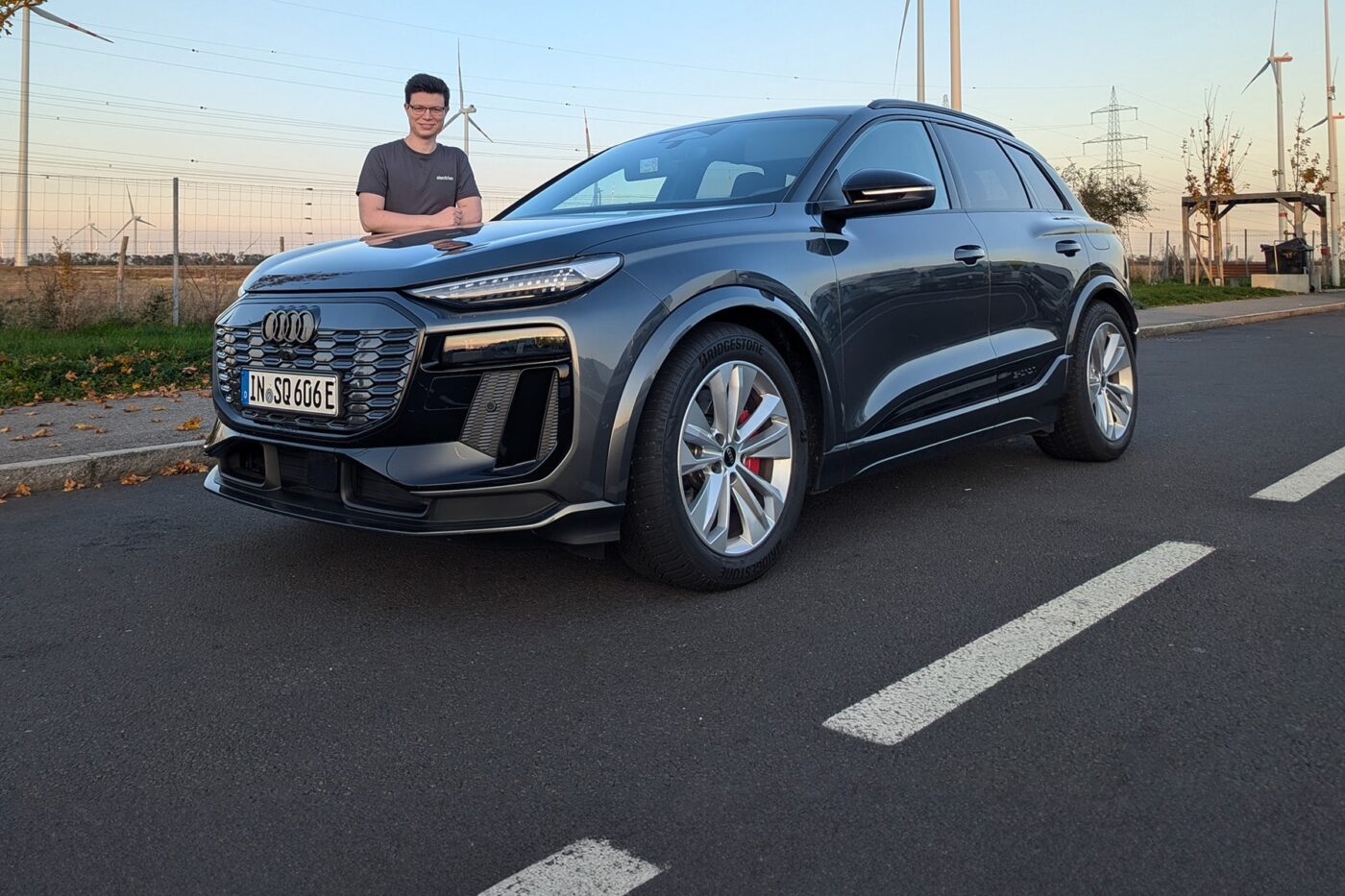
Good things come to those who wait: first drive with the Audi SQ6 e-tron
The PPE (Premium Platform Electric) was presented in 2021 and was to become Audi’s slice of the VW Group’s electric cake. The division was clear: the VW core brand would develop mass models with the MEB, while electric sports cars from Porsche and Audi would serve the premium segment in between. After a delay of more than two years, Audi’s first PPE vehicle, the SQ6 e-tron electric SUV, is finally rolling out to customers. We had the opportunity to scrutinise Audi’s technological spearhead.
Finely tuned chassis
The Q6 once again does everything right in the German carmaker’s favourite discipline. The steering is pleasantly firm and direct, the suspension provides the right feedback from the road and yet it gently irons out every bump. The driving experience is accompanied by a grumpy, artificial sound that didn’t quite convince us. OK in normal driving mode, but definitely too intrusive at full throttle – the Porsche sister company has solved this more beautifully.
In addition to the ‘D’ driving mode, the gear selector also has a B mode, which enables real and perfect one-pedal drive – including braking down to a standstill and hold function. Those who prefer to set the recuperation individually can choose between three recuperation levels via shift paddles, which also enables deceleration-free coasting.
A nice visual gimmick is present when accelerating is the zoom effect in the head-up display: if you press down hard on the power pedal, the speed display gets bigger and bigger – as if the brute acceleration would tear the speedometer out of its holder.
Redesigned cockpit
In general, the head-up display impresses with its sheer size. Audi has taken the flying navigation arrows already familiar from the MEB models to a new level; they are now razor-sharp, hover precisely and stably in the right place and are a welcome aid when navigating. What we did miss, however, was a real sat nav map, as we know it from the head-up displays of Mercedes or BMW, for example. The large sat nav map is also missing from the speedometer display – a pity, as Audi in particular is known for this. What is pleasing, however, is the option of using the steering wheel buttons to scroll directly through the current music playlist without taking your eyes off the road.
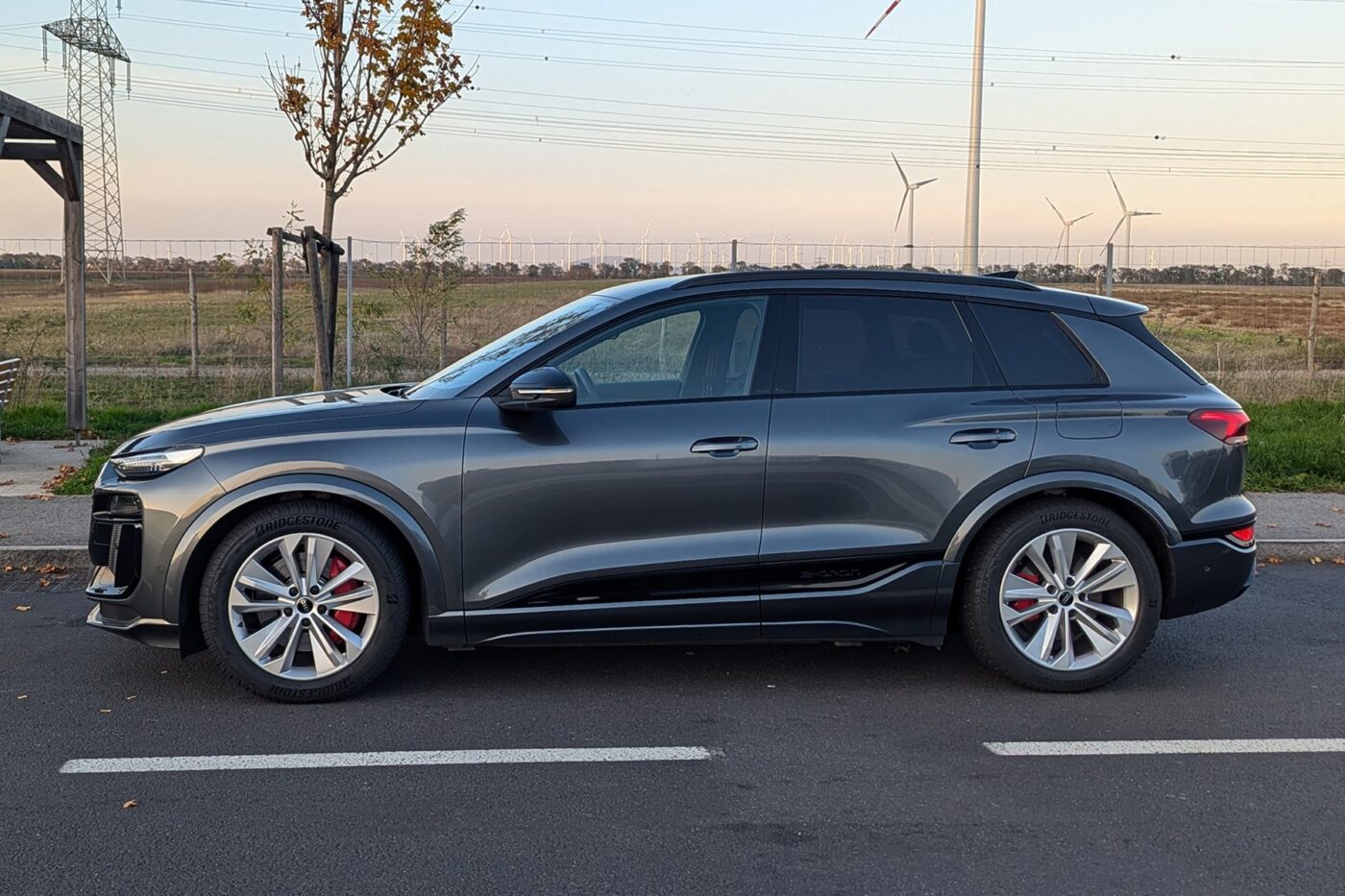

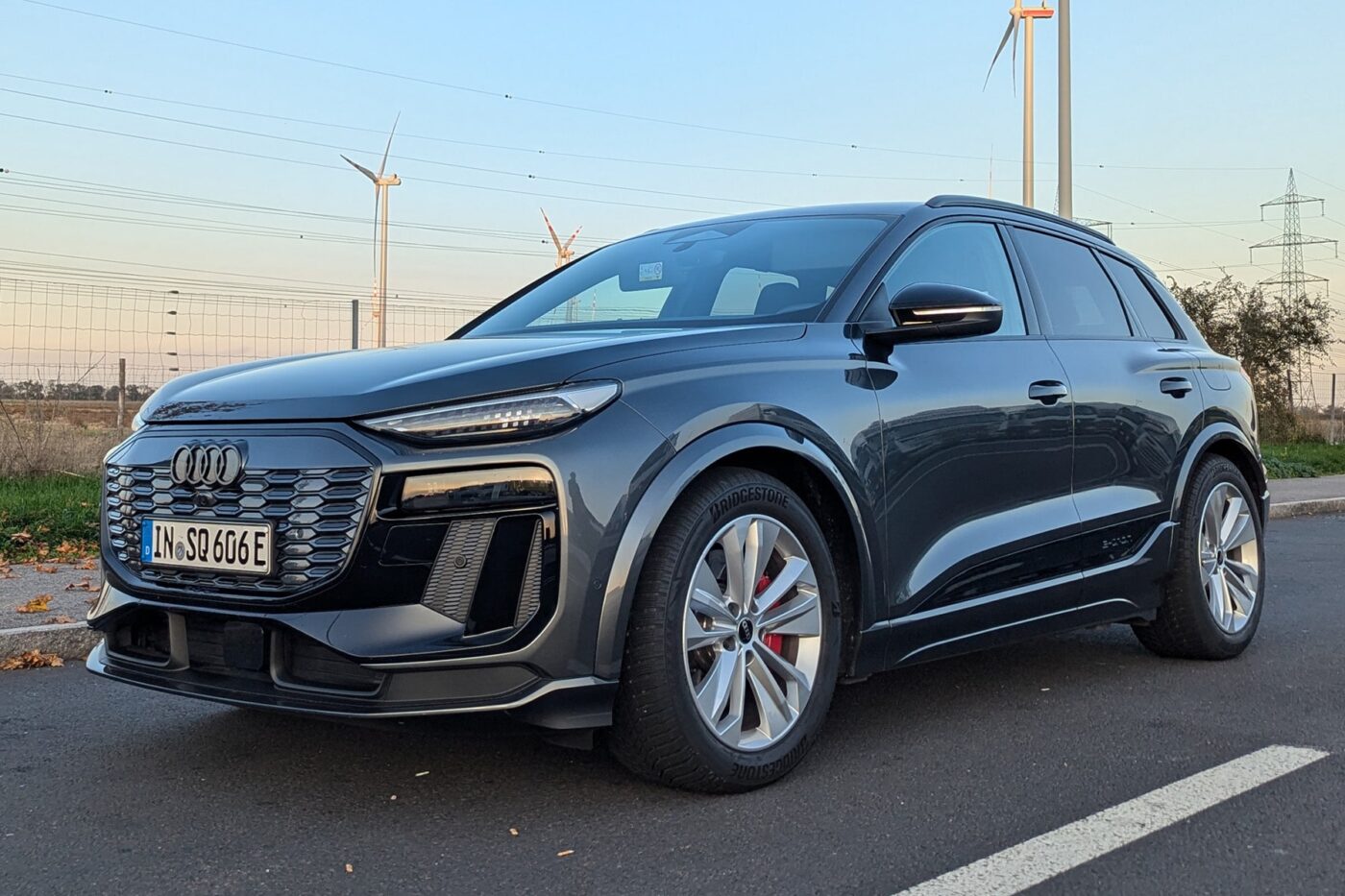
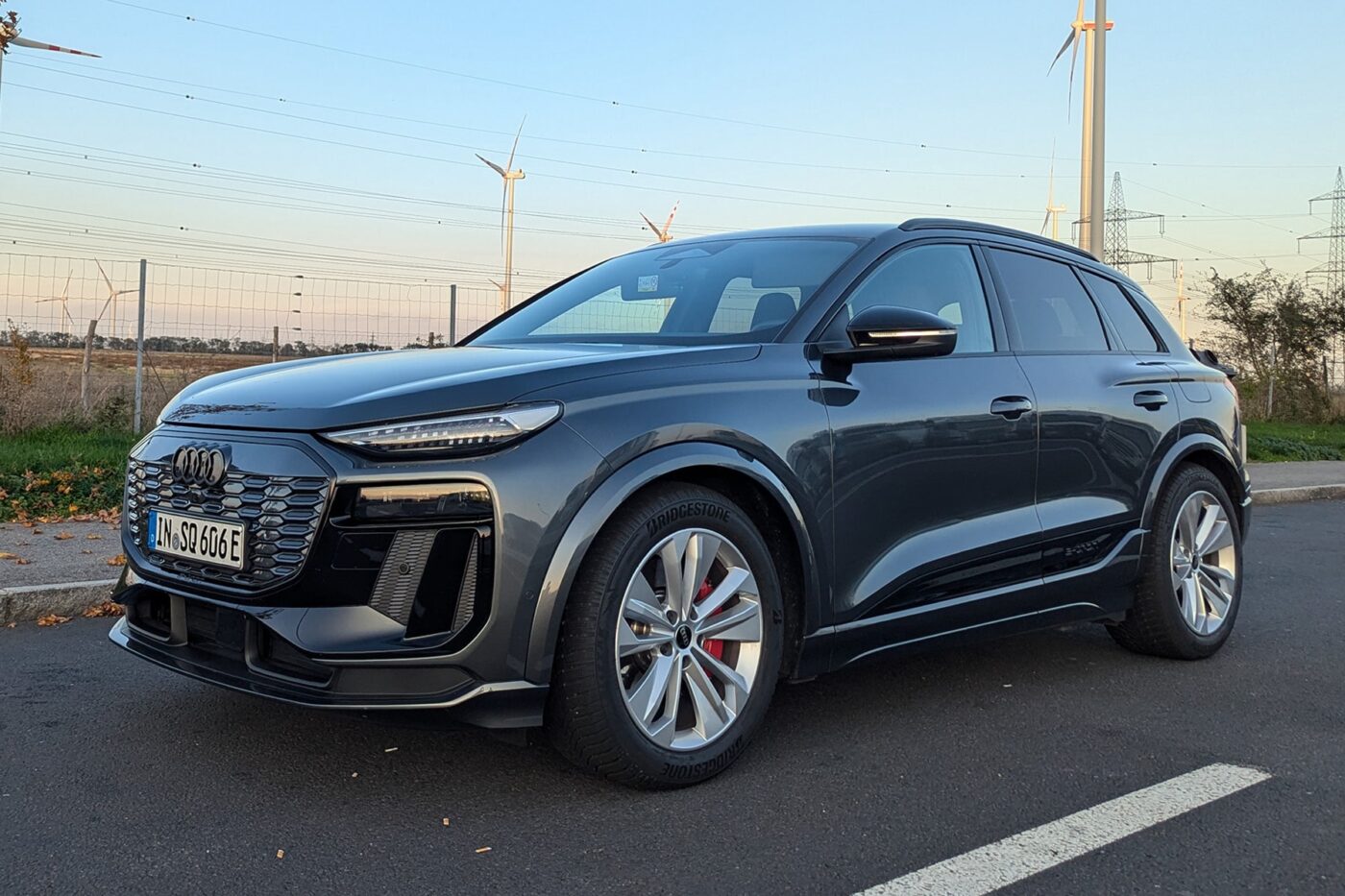
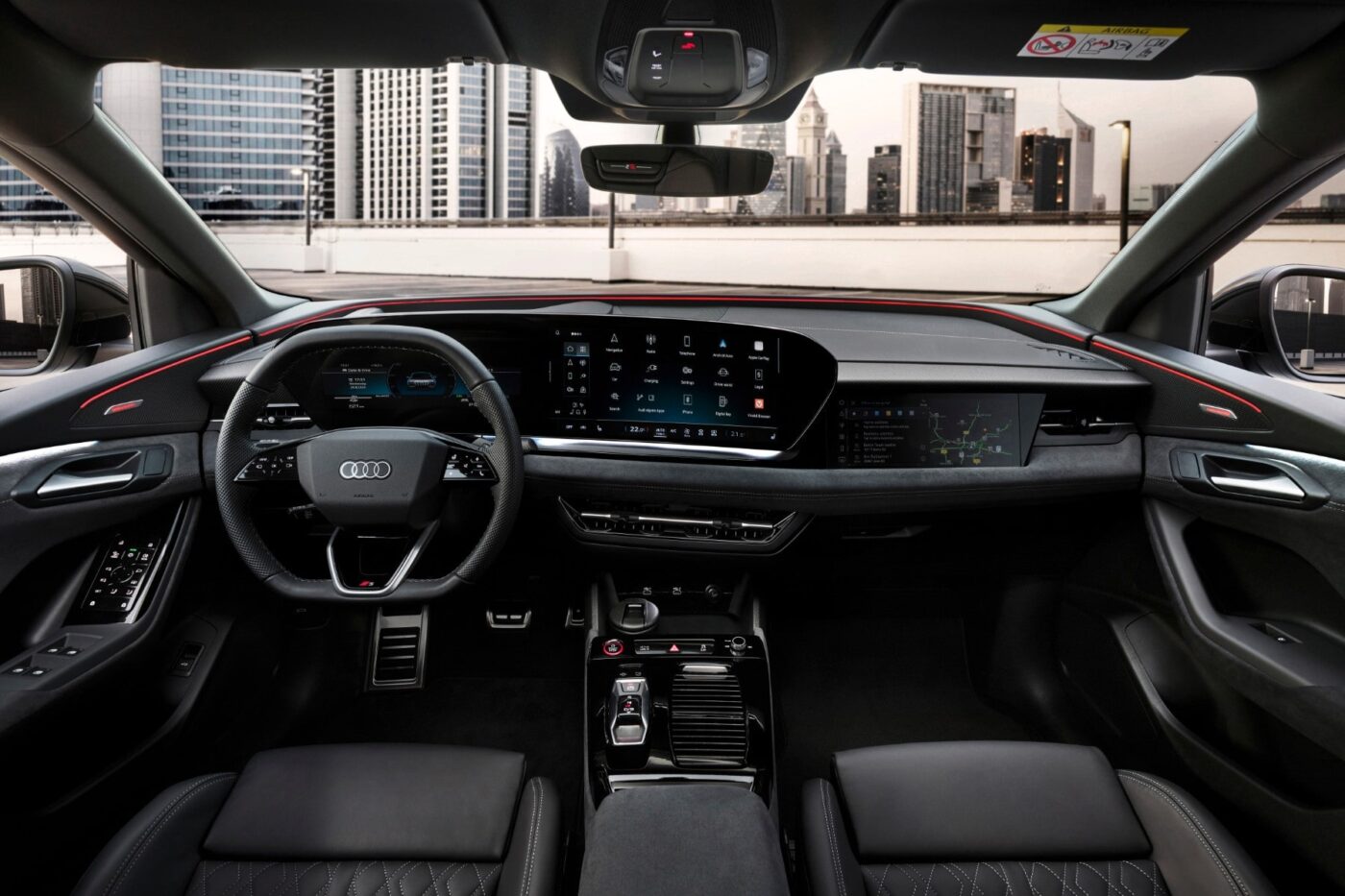
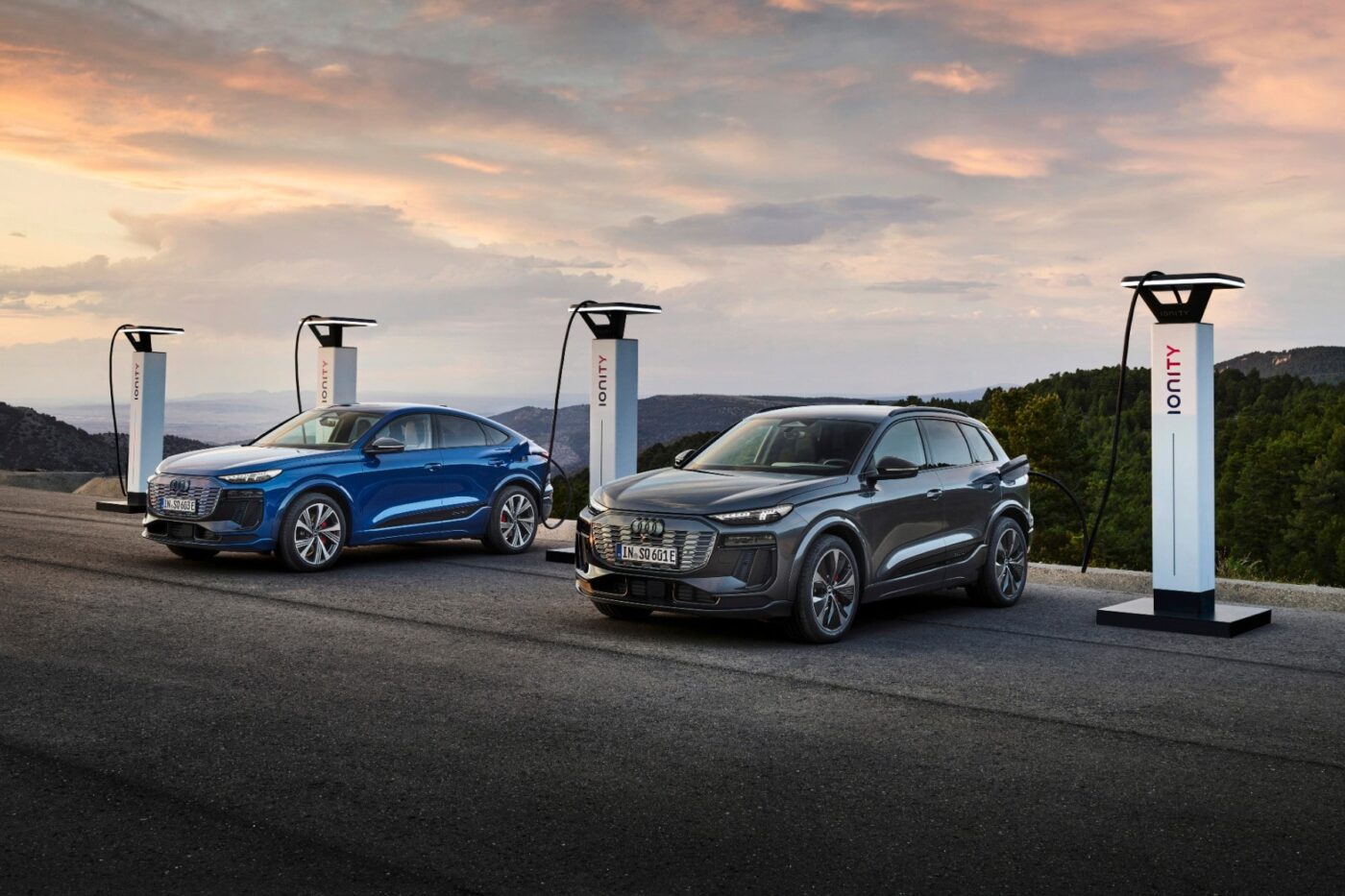
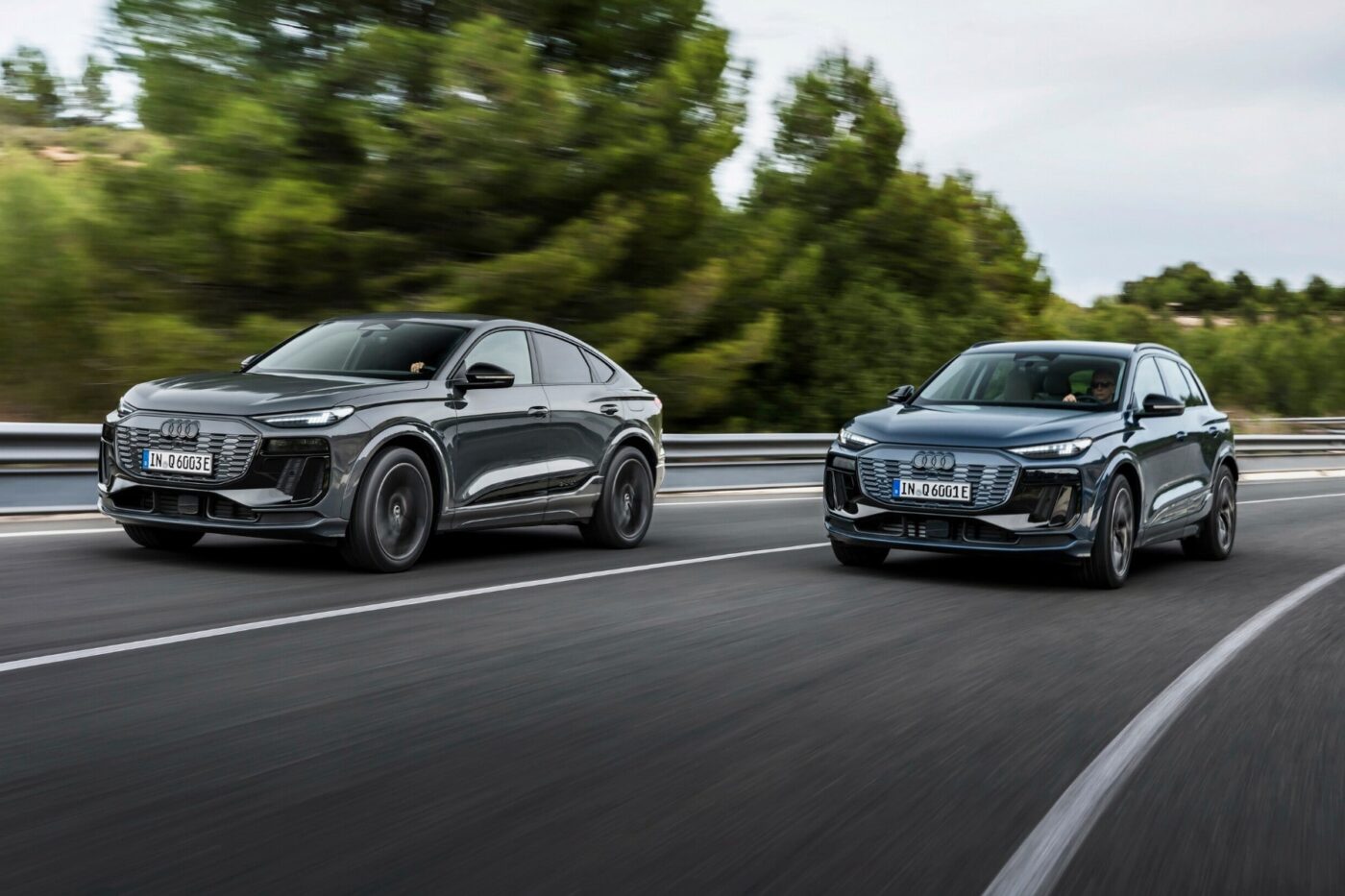
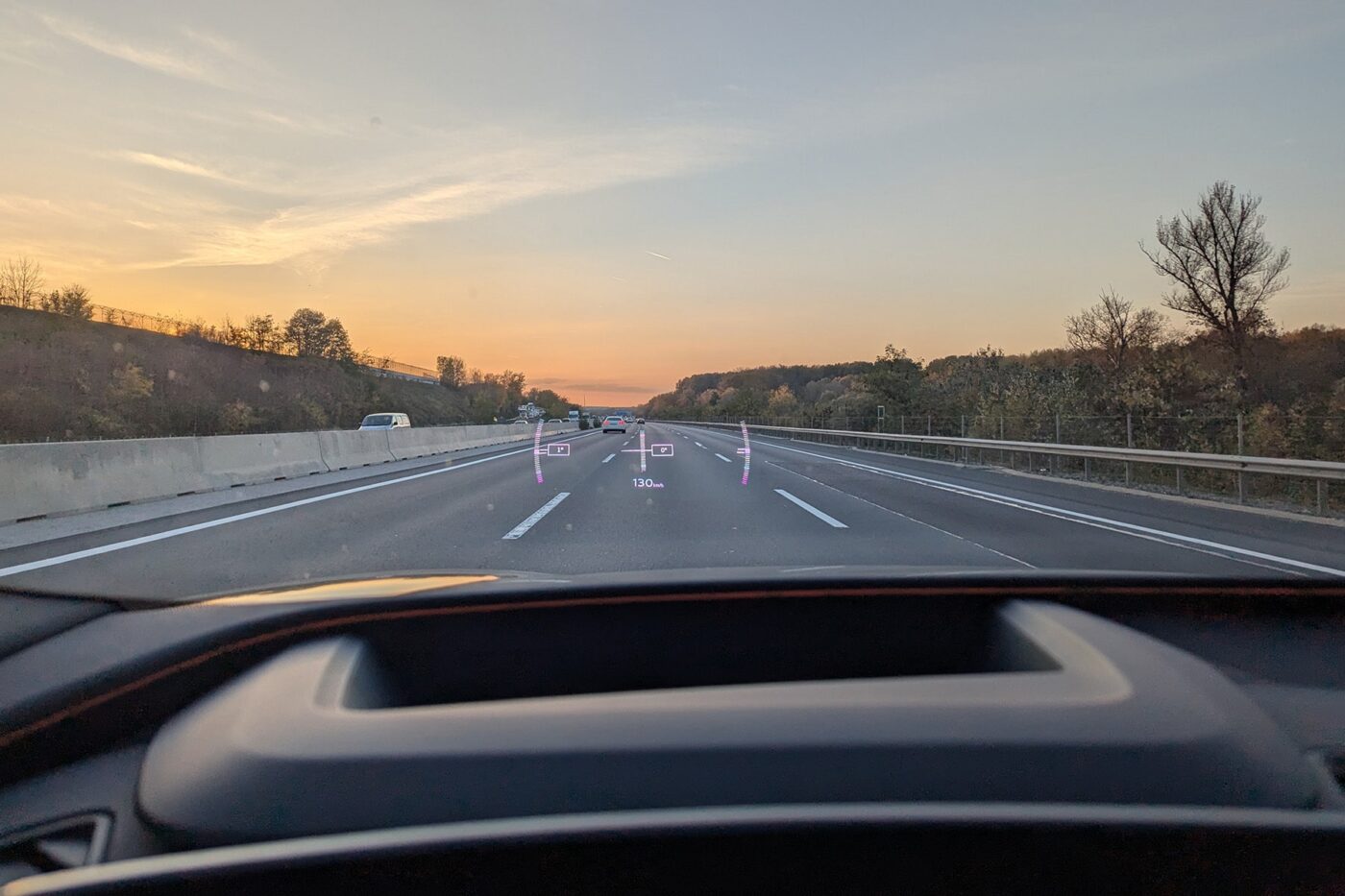
The assistance view is also outstanding; it now indicates in a very large format and optimally in the field of vision whether the car in front has been recognised, which lane markings it can see and whether the distance to the vehicle in front is correct.
Audi has also made significant progress in the rest of the interior with the Q6. The familiar, jagged dashboard landscapes have been replaced by a slim, large screen that curves towards the driver. As an addition to the driver-centred main screen, there is an optional small but fine passenger display on which passengers can control all important functions comfortably and without having to make any contortions. The large button-based climate control is no longer required, which gives the cockpit a very tidy look. The control panel in the driver’s door, on the other hand, is less tidy, with too many buttons in one place, making it feel like you’re tapping away on the numeric keypad of a keyboard. It is difficult to feel the right buttons blindly – which can be particularly important when adjusting the mirror.
The steering wheel buttons are also difficult to feel. Just like the new Audi logo, they are very flat and embedded in the steering wheel with virtually no protrusion, but react to both pressure and stroking movements, which quickly leads to unwanted actions. Why these buttons (as well as the rest of the interior) have a cheap-looking glossy finish is beyond us. Power is provided everywhere, with four USB-C ports in addition to an inductive charging pad.
Plenty of room for improvement – in a good way
What really impresses inside is the amount of space. If the 526-litre boot in the back isn’t enough, the frunk provides an additional 64 litres of storage space. Sitting in the front is comfortable, but with good support at the sides and firm support in the back. The rear bench is also impressive: if you raise the front seats slightly, the rear passengers’ feet fit comfortably underneath and there is plenty of legroom – but not substantially more than in the more compact Q4 e-tron. However, the headroom is literally outstanding; above the 1.80-metre tall editor, there is still more than a hand’s width of space up to contact with the roof lining. The centre seat, on the other hand, is disappointing, as it is not really comfortable thanks to the centre tunnel and narrow dimensions. On a positive note, however, the entire centre seat can be folded down to create a hatch for an entire family’s skis, for example. Speaking of family: there are three ISOFIX spaces – no longer a matter of course, many car manufacturers like to save space in the front.
Average assistance
The driver assistance systems are solid industry average, but unfortunately not ‘Vorsprung durch Technik’. Distance keeping is as safe as it is fluid, but lane keeping is a bit of an egg dance. Instead of being firmly centred in the middle of the lane, you get cradle-like swaying from the left to the right edge of the road and back again. Not only do various external competitors do this much better, the sister brand Porsche can also do it better. Nevertheless, when used as a Level 2 support system, the assistants do what they are supposed to do – if you just keep your hands on the steering wheel.
Software remains a conundrum at VW
In general, the software left us with mixed feelings. Compared to the software in the MEB Audis and even compared to the e-tron GT, Audi has made a quantum leap forward with the Q6. Everything runs smoothly, it’s easier to find your way around and the charge planner has become really useful. Third-party apps such as Spotify are nicely integrated and Android Auto makes full use of the large screen – it’s really fun. The EU cruise control can be switched off at the touch of a button, which is target group-orientated operation.
At the same time, however, there are still nested submenus and pointless pages of legal information so that you know for sure that you should look at the road when driving. Once again, the in-house lawyers have been allowed to let off steam: no other car manufacturer has as many legal disclaimers as the VW Group. The passenger display tells you all the time what you are not allowed to use while driving because it could distract the driver. The point is that in this case, the passenger display switches off for the driver anyway. Unfortunately, this way of thinking runs like a red thread through the entire operating concept.
While you get lost in the details, things as trivial as a filter for 300 kW charging points are missing from the sat nav. There, DC charging stations can be filtered according to the levels <50 kW, <100 kW and >150 kW – the level ‘>250 kW’, which is really relevant for an 800-volt vehicle, has been forgotten in the heat of the moment. Which is a shame, because the car can charge reliably and reproducibly from 10 to 80 % in a rapid 21 minutes.
The voice control can perform a handful of basic functions, such as increasing the temperature, but then quickly reaches its limits with the simplest tasks. When we ask it to navigate us to ‘Vienna’, the globe in the display turns far to the east and zooms to Vietnam – we give up on voice control and prefer to enter the destination manually.
Outstanding hardware with mediocre software
In many respects, the Q6 is symptomatic of Audi – no, of the VW Group as a whole. Fine technology is blindly mastered in Wolfsburg, Ingolstadt and Weissach, and the Q6 is also an outstanding product in terms of hardware; from 800 volts to the air suspension, everything has been done right. Unfortunately, they keep getting in their own way on the road to perfection and so our main criticism is a well-known weak point: even two years late, Audi does not deliver the level of software that many competitors offer.
The Q6 e-tron leaves us with the impression that Audi is currently performing far below its capabilities and that the same cars could do much more with better software.
And despite this criticism, the Q6 whets the appetite for everything that is yet to come from Audi. With its one-pedal-drive, numerous lighting features and an unmistakable design, it clearly sets itself apart from its sister model, the Porsche Macan. With other models, the lack of a price gap between Porsche and Audi was a problem, but not with the Macan and Q6, where the Audi is available from €63,500, a whopping €17,200 cheaper than the Porsche.
With the PPE, Volkswagen is undoubtedly well-positioned for the future. If Audi now delivers the necessary fine-tuning for the software, the Q6 could become the game changer that the company so urgently needs.




0 Comments